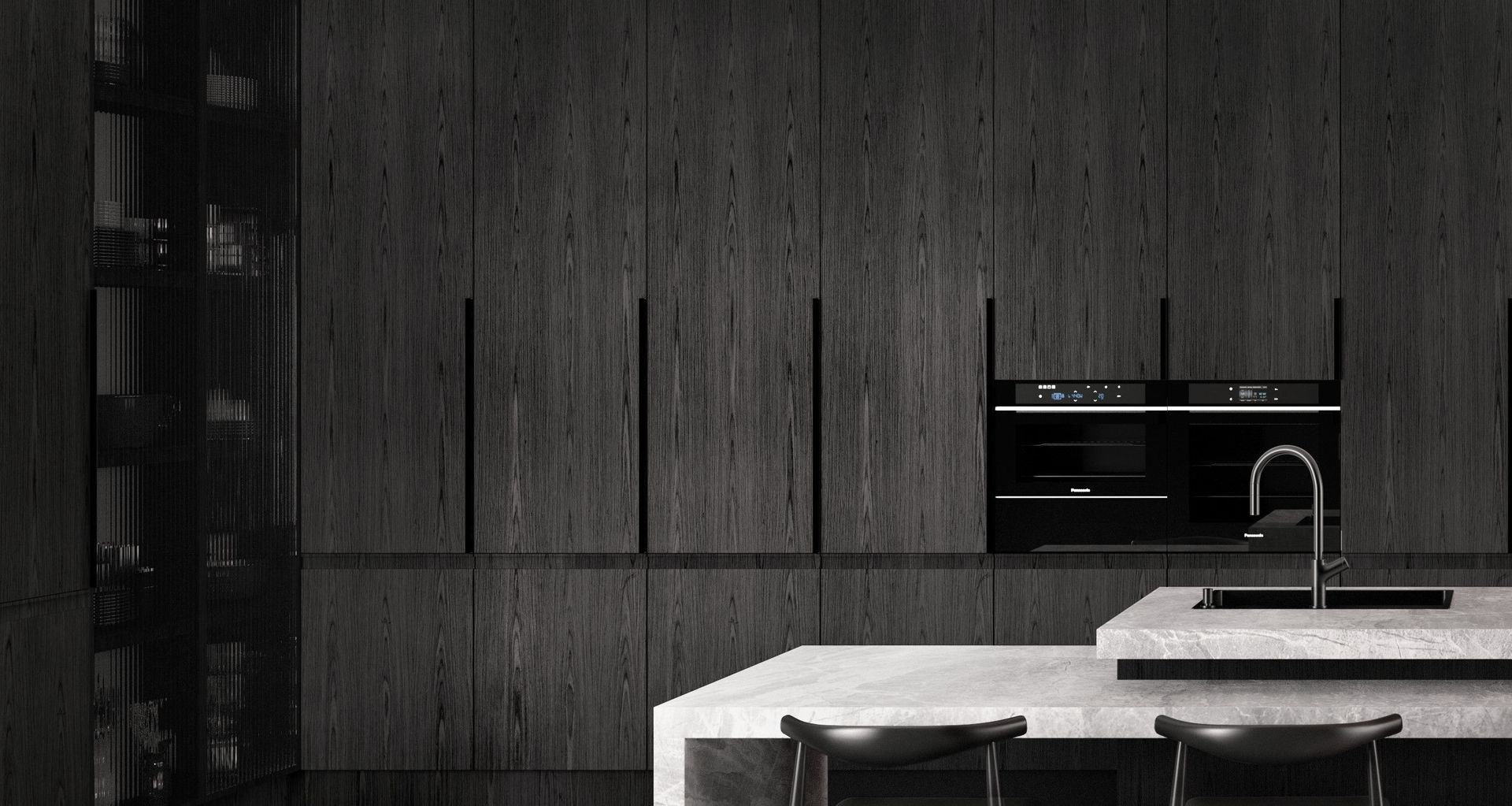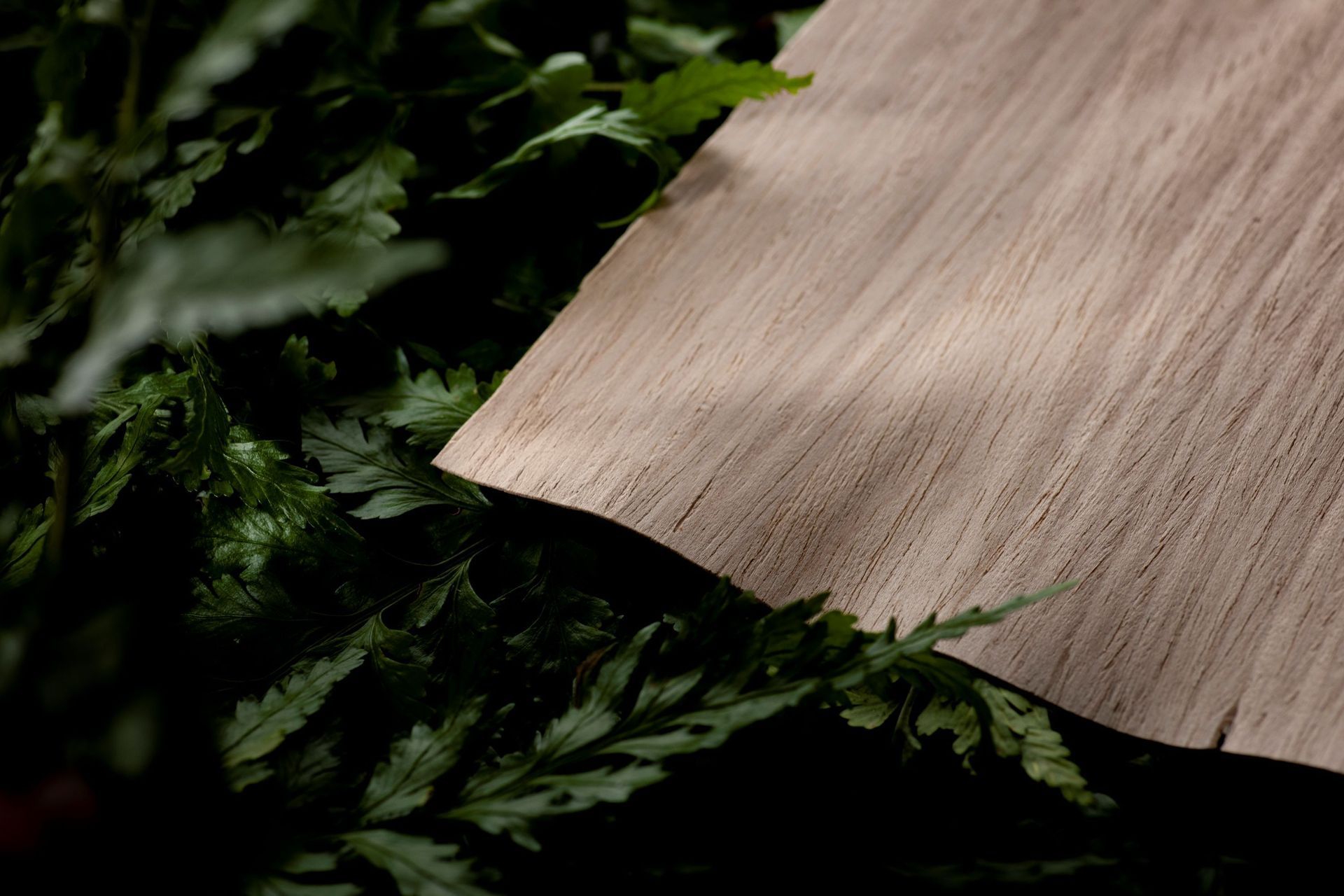Veneer panels: How sustainably sourced timber veneer can enhance a space
Written by
29 August 2022
•
5 min read

There’s a reason that kitchens and bathrooms are the two most popular and common spaces to renovate in a house. There are many different outlets through which to convey a particular sense of style and design: often, appliances and fixtures are the star of the show, commanding immediate attention providing an initial wow-factor.
In addition to these two fixings, there’s one other feature that, especially in a kitchen, draws the eye – the cabinetry. Whether it’s timber veneer, melamine, HPL, thermoform or acrylic, the decorative surface used for this cabinetry sets the tone for the rest of the space. It can be colourful or understated, monochromatic or matched to the furniture throughout the house. The possibilities are boundless – something that NZ Panels knows well.
NZ Panels Group is a leading manufacturer of decorative interior panels used by joiners and builders: the group has multiple brands and products that encompass everything including the kitchen sink (literally). Two of the most well known brands – Bestwood and Prime Panels – specialise in decorative panels, and supply the bulk of the country’s veneer panels used in interiors.
When it comes to timber veneer, there is a huge range on offer and as Veneer Category Manager Johnny Dobbyn explains, some clients want a very consistent look, while others embrace a more organic and unstructured veneer panel with all the knots, inconsistencies and variations in grain and colour that you’d expect when dealing with a product sourced from a tree.
“Some people want a more uniform grain on their panels, while others love the all natural look,” says Johnny. “The new Evoake range from Bestwood achieves the former, while the Prime Toitū Veneer from Prime Panels does the latter.”
ArchiPro sat down with Johnny to discuss the new ranges and their applications in contemporary New Zealand homes.

The Evoake range
Consistency is key in this new offering from Bestwood. The uniformity of the grain, texture and colour of these engineered oak panels offer significant benefits for specifiers and joiners when using oak for their projects, Johnny says.
“It’s an engineered veneer, made to look like American oak,” says Johnny. “It allows us to do what nature hasn’t for a long time: and that’s provide a decorative panel with a consistent straight grain, central crowns, and uniformity.”
He says it works particularly well in commercial builds, or in residences where people want to carry a continuous colour or look throughout the home.
“Whether it’s a fit-out of offices or retail, clients can have confidence in the end result – they’ll know exactly what it's going to look like when stained or polished.”
The Evoake range features standard repeatable oak veneer layons in both crown cut and quarter cut, reducing wastage on panel matching, especially for projects using crown cut oak. With six crowns on each panel in the same direction, the result is assured, not only with the grain but also in terms of colour consistency.
“The Evoake veneer layons are sustainably sourced and are made in Italy to a proven high standard," says Johnny. "They’ve been tested using a variety of stain finishes to ensure they perform the same as Bestwood Natural Veneer.
“And as with all timber veneer panels, they are supplied with a coarse sand from our veneer line but will require a further sand by a coating professional before staining and coating.”

The Prime Toitū Veneer range
Where the Evoake panels project consistency, this offering evokes nature.
Hand-crafted to emulate the look of solid timber, Prime Toitū panels use mismatched leaves in a planked effect, resulting in considerable variation between panels – which Johnny says works especially well for large scale cabinetry projects with a focus on authenticity.
The range also includes six New Zealand-native timbers, along with American White Oak, Macrocarpa and American Walnut.
“Toitū has a wonderful look – the panels aren’t brushed, as we can’t brush native timbers because they’re not hard enough in the growth rings," says Johnny. "This means it really replicates solid timber, but in a much more cost-effective way: a cubic metre of solid timber would give me 100 square metres of wall panelling, while a cubic metre of the Toitū would give me almost ten times as much.”
All of the different varieties in Toitū veneer carry Environmental Choice NZ accreditation, and come in panels sizes up to 2750mm x 1220mm depending on the MDF or plywood substrate chosen.
The panels are also from certifiably sustainable sources, backed with the added advantage of the company’s exclusive Track my Tree initiative for NZ Native species- a code can be used on the Prime Panels or Bestwood websites, to identify exactly where each tree came from via Google Maps, view the logging permit and tree source i.e. windblown or plantation grown.
This is an especially rewarding prospect for Johnny, who has been working with native timber in some way or another for most of his career.
“It’s really exciting for me,” he says. “I’m a cabinet maker by trade, so using native timbers again, and doing it this way, is fantastic because of the potential versatility of it – there are multiple timbers to choose from, and people can use these panels to make classic designs, contemporary designs, anything really.
“That’s what I love to see.”
Learn more about NZ Panels and its Bestwood and Prime Panels brands.
